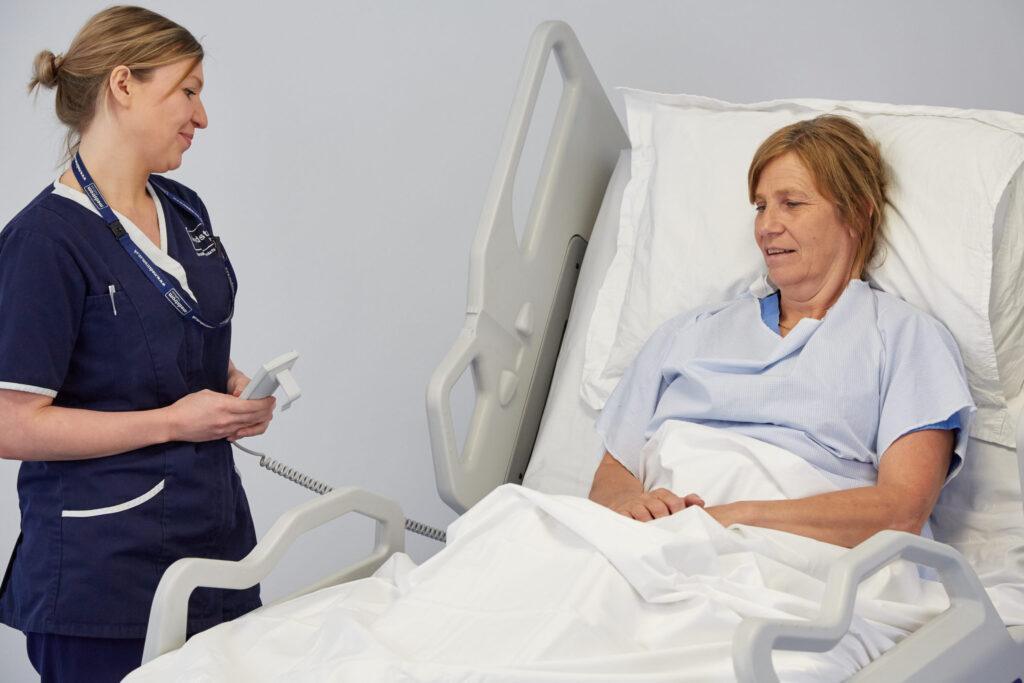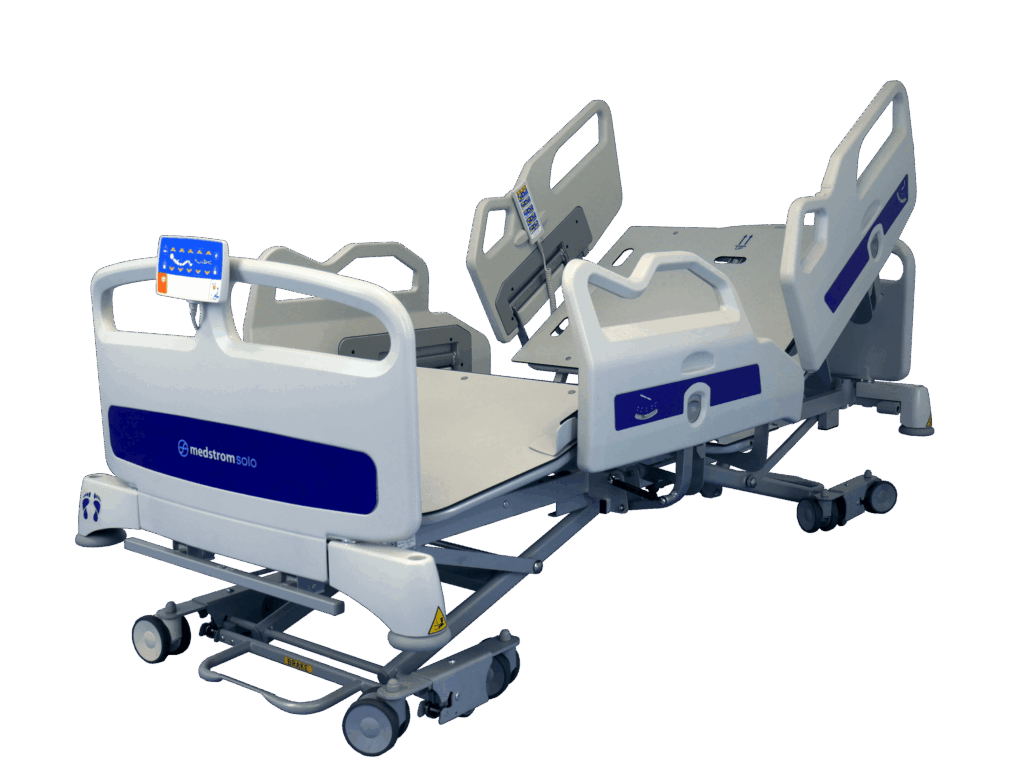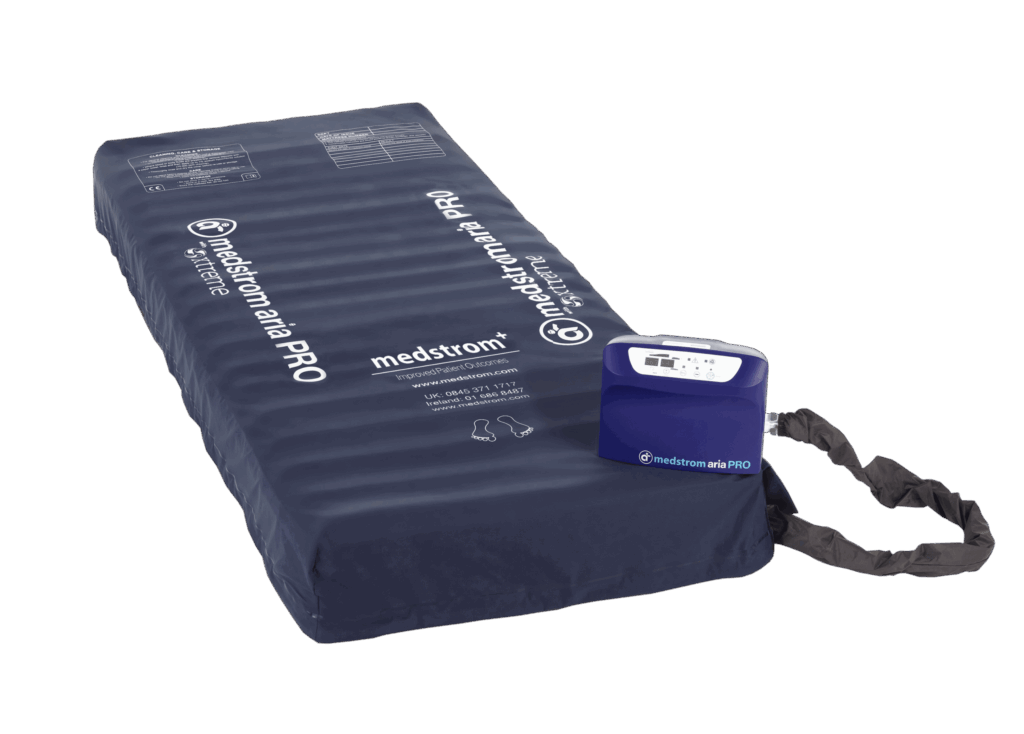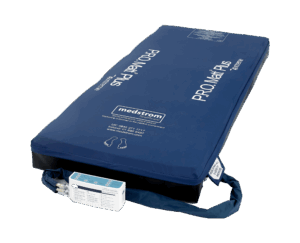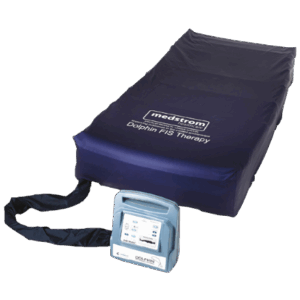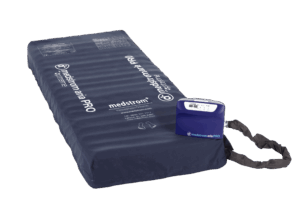
Part 2: What Are the Risk Factors in Pressure Ulcer Development?
Part 2: Surfaces
Another essential risk factor to account for during the assessment of a patient at risk of pressure ulcers is the surface (also known as hospital mattress, air mattress, dynamic mattress). Norton et al. (2011)1 highlights that the surface an individual lies, sits, or leans on can impact the risk of pressure ulcer developments. Bony prominences resting against a hard surface will cause high pressures and it is likely that damage will occur on the bony/tissue prominences2. This risk can be reduced by changing the mattress or seat cushion that a patient uses2. The use of a support surface such as a mattress or seat cushion is considered one of the most used preventions3.
There are lots of options available for healthcare professionals when it comes to selecting a pressure redistributing support surface. It’s important that clinicians have a sound understanding of all the different technologies that are available to them before deciding the appropriate support surface for their patient or hospital.
The Medstrom mantra of ‘right patient, right product, right time’ is also key to improving patient outcomes for prevention and management of pressure ulcers as a mix of support surfaces, and a ‘step up’ and ‘step down’ protocol of different technologies also needs to be considered. The science behind all of the technologies available to hospitals is something Medstrom are particularly passionate about. Please click here for more information on our CPD ‘Science of Surfaces’ course.
NICE (2014)4 advise that patients that are not considered high risk following assessment can be cared for on a high specification foam mattress. It is stated however, patients considered high risk or that have existing pressure ulcers, are considered for dynamic (air) support surface. This is particularly important if they are unable to reposition off the pressure ulcer, if pressure ulcers are on two or more turning surfaces that limits repositioning, if the patient is at high risk of developing further pressure ulcers or are uncomfortable or have undergone graft or flap surgery4.
Generally, there are two main types of therapy available with mattresses3:
- Pressure redistribution (reactive)
- Alternating pressure (active)
Reactive and immersion-based surfaces (also known as continuous low pressure, CLP, low air loss) help to reduce the interface pressures in contact with the patient, whereas conventional alternating support systems (also known as alternating pressure, AP and alternating low pressure, ALP) concentrate on ‘relieving’ pressure by alternating high and low pressures between adjacent parts of the body in order to provide off-loading. For some systems, the mechanism of the alternating action and achievement of a deflated cell, can result in more air being forced into the inflated cell, thereby increasing pressures in contact with the patient.
In recent years, there has been a movement towards support surfaces focusing on immersion and envelopment characteristics and manufacturers and companies were asked to avoid using terminology such as ‘pressure relief’ and ‘zero pressure’5.
Due to technical advancements, there are new technologies available in today’s healthcare arena (such as fluid immersion and air immersion), that can achieve incredibly low pressures in order to truly immerse and envelop patients, thereby reducing interface pressures in contact with the patient.
Click the links below for the other pages in this series:
What are the Risk Factors in Pressure Ulcer Development?
